The intersection between guitar and piano is ever present—and so is the potential for harmonic conflict, especially when improvising. However, guitar and piano can be a wonderful combination. Listen to the recordings of Pat Metheny and Lyle Mays, or Jim Hall and Bill Evans for stellar examples. But if your ears aren’t turned up it can be a recipe for disaster.
Often, the paradigm on the bandstand is that if there is a harmonic clash between the guitar and piano, it’s automatically the guitar player’s fault. So how do we deal with this? There are a couple of methods to take a more defensive approach, but the one we’ll address is to learn which notes to omit. Trim down those chords and be nimbler and stronger. Chords with more than two or three notes are, for our purposes, a full-on failure. The good news is that these lean-and-mean chords are easy to play and, within the context of the band, sound way better than the ubiquitous barre chord.
The basis of the chords we’re looking at are subsets of chords that are likely already very familiar to you (Ex. 1)
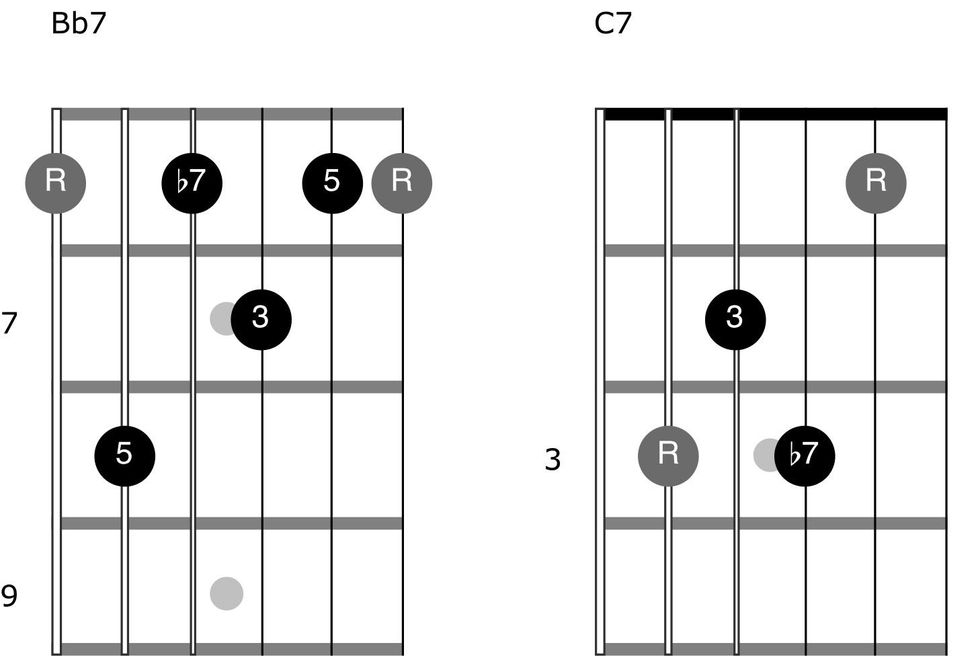
The “money” in these chord forms is literally in the middle of the chord. On the 3rd and 4th strings lie the 3 and 7 of the chords. These are the most important two notes of your chord. The different variations of the 3 and 7 give each chord its unique color, such as major 7, dominant 7, or minor 7.
If we reduce these chords to their essence, we get the shape in Ex. 2. This trims down the Bb7 to Ab and D, while the C7 is simply the E and Bb. These notes are sometimes referred to as guide tones. We’ll move this shape up or down the fretboard to accommodate each required chord quality.
Ex. 2
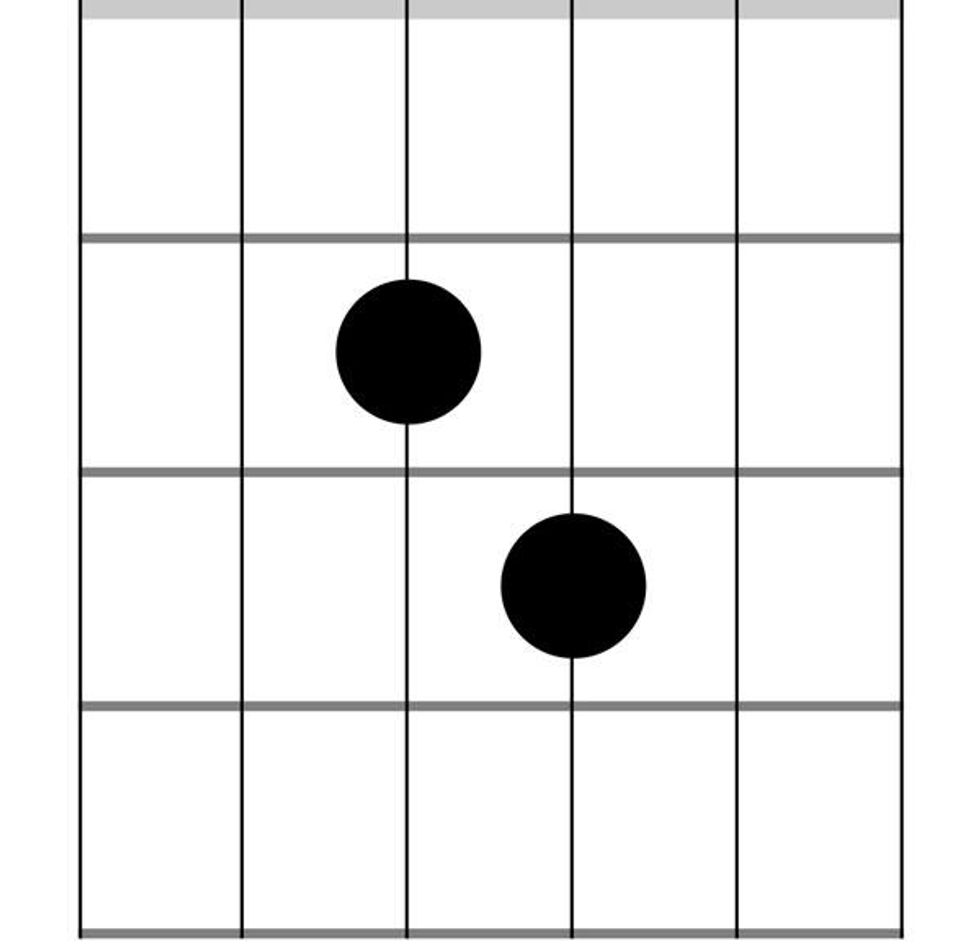
We’re only going to use two other interval shapes in addition to the tritone. In Ex. 3 you can see a perfect fourth on the left and a perfect fifth on the right. They are super easy to play and ultra-effective in our journey to more defensive guitar playing. Feel free to use whatever fingering suits you.
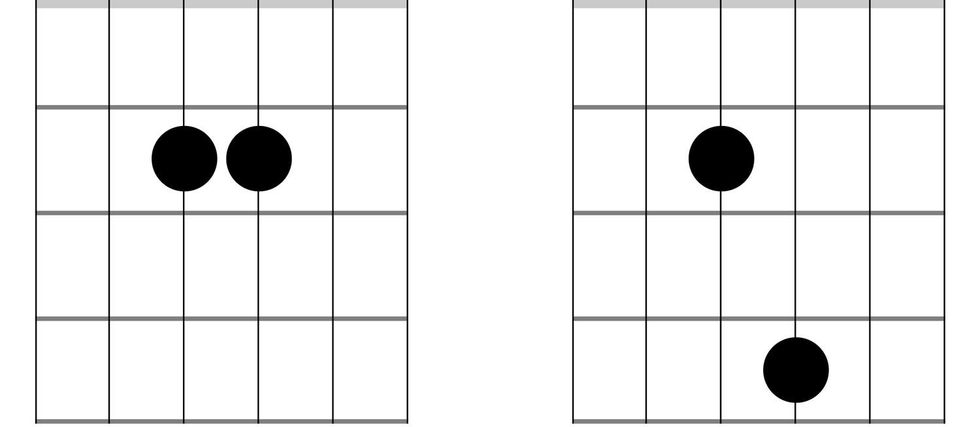
Let’s put these shapes in context. In Ex. 4 you can see how these shapes work with a 6th-string root (top row) and a 5th-string root (bottom row). I’ve included the root notes simply for reference and to help you better visualize the shapes. In a solo setting you may even want to include the roots.
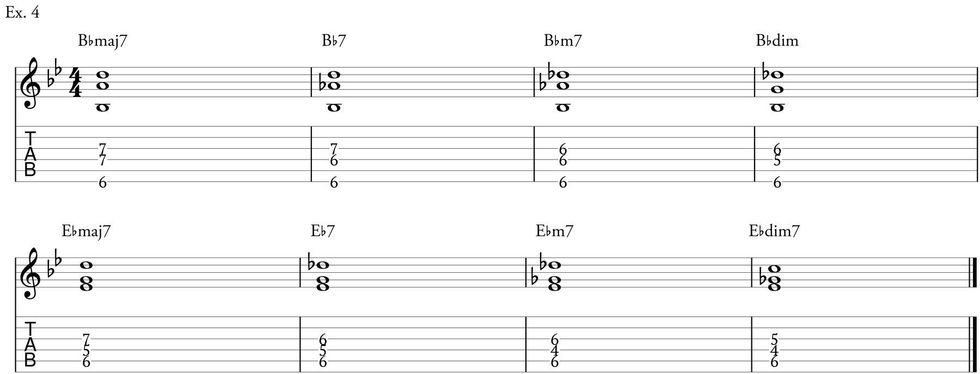
An excellent “closet organizer” for musical data is the 12-bar jazz blues form. In Ex. 5 I use our core family of shapes to work through an entire progression. I’ve made sure to include dominant, major, minor, and diminished chords in this example. The first step should be to play it with the roots and then try to “hear” the roots while playing only the guide tones.
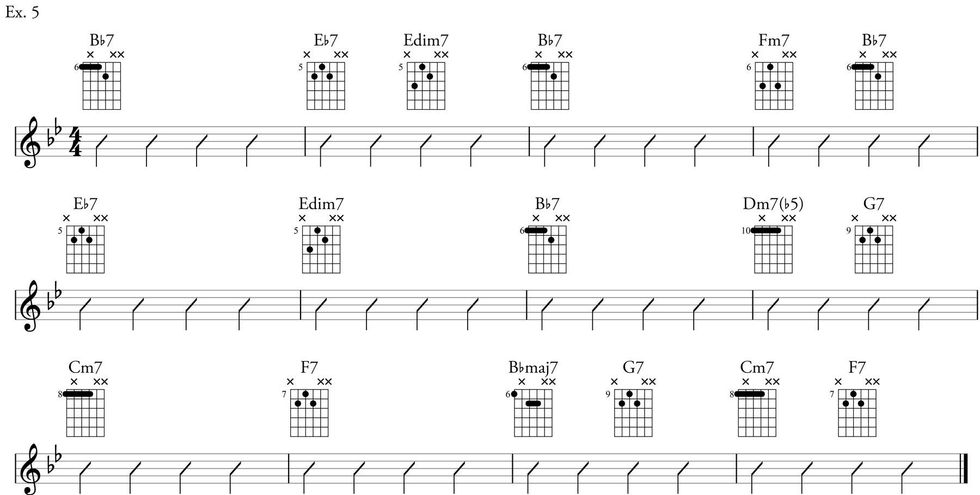
The absolute undisputed king of playing these types of chords is Freddie Green, who was the longtime guitarist in the Count Basie Band. He made an entire career of playing quarter-note rhythms and being the glue that held the rhythm section together. In Ex. 6 you can how Green might play a 12-bar blues in Bb. Check out the chromatic movement in the last two measures. It’s amazing how smooth you’re able to connect the chords using only two notes.
Admittedly, the rhythm is a bit bland and feels sterile. In Ex. 7 I play the exact same chords but add in a bit of chromatic movement and some offbeat rhythms. The occasional extension (9, 11, or 13) is cool, but pick your spots wisely. Listen to the piano and look for your space.
This same concept can be applied to your single-note improvisations as well. In fact, this is a valuable step in learning to play over changes. The goal is to outline the chords so well that your ear can imagine the harmony going by. In Ex. 8 you can see how I might approach this. Notice the lack of “blues licks.”
While it always looks cool on your IG page to be seen playing stretchy Alan Holdsworth-looking chords, sometimes it’s the simple and economic approach that goes down easiest. Whether comping behind a singer, playing with a jazz big band or playing chords and walking bass Joe Pass-style, the defensive approach to harmony can oftentimes be your ticket to ride.









